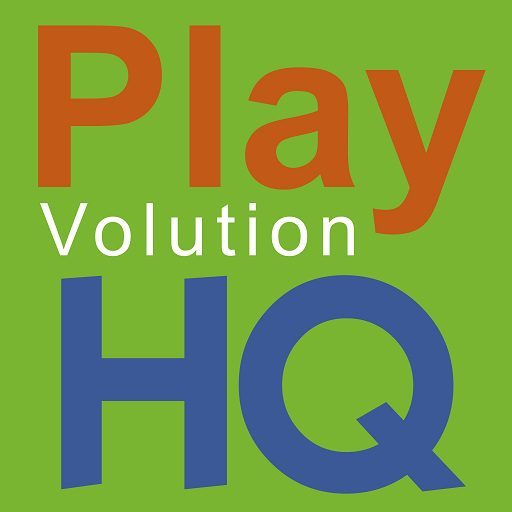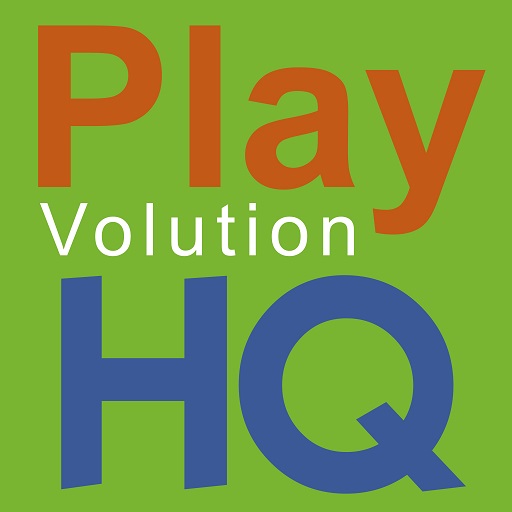
In PHQP 0006 Don’t Neglect Sensory Integration, Jeff delves into why sensory play is essential before academics. From running and jumping to twisting and climbing, Jeff explains why early learning settins should focus more on wiring children’s sensory systems. He also explores the eight sensory systems and discusses distinguishing playful aggression from violence.
Episode Video
Watch Now: PHQP_0006 Don’t Neglect Sensory Integration
Episode Notes
- Sensory Integration
- Auditory System
- Gustatory System
- Interoceptive System
- Olfactory System
- Proprioceptive System
- Tactile System
- Vestibular System
- Visual System
- Tactile Discrimination
- Visual Discrimination
- 8 Sensory Systems That Drive Playful Learning
- 6 Critical Aspects That Clearly Distinguish Playful Aggression From Violence
- Podcast Archives
Show Notes
- Subscribe | Video Episodes or Audio Episodes
- Contact Jeeves The Intern | jeeves@playvolutionhq.com
- Contact Jeff | podcast@playvolutionhq.com
- Support The Show Via Amazon | Shop Jeff’s Amazon Associate link
- Support The Show With A Membership | Become a member
- Make A One-Time Contribution | Buy us a shot
- Share Content | Share photos and short videos of kids at play
- Visit | Playvolution HQ or Explorations Early Learning
- About | Jeff
- Training | Learn about upcoming online events or booking an event

The Don’t Neglect Sensory Integration Transcript
Hey, welcome to the Playvolution HQ podcast. I’m Jeff Johnson. Thanks for pushing play on with the show.
So a couple of neighborhood kids were playing a game they invented. I love self-invented kid games. I think we need to provide kids with more time to get bored and have to figure out their own games.
So there’s about four or five of them hanging around the neighborhood playground. Mostly boys. There was a couple of girls there, it was probably, you know, mid-afternoon, after school kind of stuff.
And they had a water bottle about half full of water. And the game was, you hold the water bottle out in front of you with your fingers, and then you let go of it and you try to punch it before it hits the ground. And it was, I mean, everybody takes turns and cheers if you got it, you know, moans and groans if you didn’t.
A lot of them, if they missed the punch, they tried to get it with a kick. And it was, I mean, it’s a form of power play, right? They’re showing their physical prowess or lack thereof. And lots of laughs, lots of fun, lots of good times with a simple water bottle.
We talked about defining loose parts a while ago. And this is one of the wonders of loose parts, this wonderful game using nothing but their imaginations and a half full plastic bottle of water. Yay for play.
Moving on, topic one for this episode. We’ve got core value part six, which is sensory integration should not be neglected. And I think sometimes the whole takeaway here I want you to have is that we rush through the process of sensory integration onto academics before kids are physically ready for it.
And slowing that down would actually help them learn the academic stuff more efficiently when they were physiologically ready for that. So sensory integration should not be neglected. And we do neglect it when we prevent rough and tumble play, when we don’t provide enough time for kids to run and jump and twist and spin and move their body in interesting and complex ways.
We are neglecting their sensory integration. Human children have never been more sedentary than they are right now in 2025. And it’s a problem.
It impacts their development. And so early learning programs should be looking for more opportunities, more ways to put kids into motion so that their eight primary sensory systems, which we’ll get to in a bit, have a chance to wire to the brain. The sensory systems are the only way their little brains can connect with information.
The only way the brain gets information is through those systems. And if those systems aren’t fully wired and integrated and automated, it’s hard for their little brains to collect the information they need to survive and thrive in the world. Kids are driven to wire these systems.
And the way they do it is by moving and touching and interacting and engaging. And so the more sedentary you’re asking kids to be in your early learning setting, the more you’re actually slowing this sensory integration. The more you’re doing to prevent a lot of the up and active, hands-on, engaging, messy activities kids like to engage in, the more you’re doing to hinder the wiring of these systems.
And the more you do to support a child-led, hands-on, play-based, exploratory, focused environment, the more you’re doing to support it. Early learning programs often rush to the academics. We start worrying about the ABCs and we worry about the one, two, threes when what we should really be thinking about is, is this kid running and twisting and hanging upside down enough with three and four and five and six and even seven and eight-year-olds? The academics will be a lot easier when their brains are fully connected to their sensory systems and all of those systems are integrated together.
But we often rush past that because, I don’t know, we don’t maybe value the physicality as much as we should. We need to address sensory issues and needs before academic expectations. And that’s really kind of a takeaway from here.
Focus on the sensory integration before the ABCs and the one, two, threes and knowing your colors and all those academic things. And future episodes will dig deeper into this. As a related note, learning difficulties often start with missensory milestones.
So when kids don’t have that sensory integration happening, there can be those learning difficulties with the academic stuff. And we have kids being pulled out of class for pediatric occupational therapy, which is basically an opportunity in a lot of ways to help kids get those sensory systems wired the way they’re supposed to be. And we can kind of prevent the need for those interventions if we give the kids the physical experiences they need in the early years.
And neglecting those sensory integration activities may cause behavioral challenges. Some of those kids you find troublesome to work with, the challenging kids, that kid in your classroom, that kid that can’t sit still, that kid who can’t keep themselves for themselves, hands to themselves, that kid who seems to be a bull in a china shop. Often those kids are just lacking the sensory integration.
And maybe they become behavior problems because they are trying to engage in the activities their bodies know they need to wear those sensory systems, the running and the jumping and the climbing and the touching. And those things, when you’re not focused on those things, can often be distractions that get labeled as behavior problems. But if we focus, if we pull back and we look at those behaviors as invitations for sensory engagement, maybe we can approach those kids a little bit differently.
Topic two related, the eight sensory systems. So I think we’ll end up doing maybe episodes on each of these eventually, but I wanted to go through them kind of quickly. There’s the five that we all got introduced to in elementary school, and there’s three others we maybe don’t pay attention to enough.
And you may not even be aware of them. I was well into my early learning career before I was fully aware of them myself. So let’s go through these.
So the tactile sense, the system, the sense of touch. We need to touch things. The visual system, the system that we use with our eyeballs.
Again, the sense of touch, the visual system are probably the ones we use most to navigate the world, along with our auditory system, the sense of hearing. The olfactory system, the sense of smell. The gustatory system, the sense of taste.
So that’s kind of fun to say, gustatory, gustatory. Good word to teach four-year-olds, right? The vestibular system. So this is all about our sense of balance, and it kind of lives in our inner ear.
And so all that moving I was talking about earlier to build the vestibular system, kids need to do things like rotate. They need to spin in circles. They need to invert themselves.
They need to go upside down. They need to cross their midline, those kind of things. This is things, kids are wired for these activities in part because it helps wire the system.
But often we shut down the activities that build this system. We don’t want them twisting themselves up in the swing and then letting themselves unwind, for example. We don’t want them hanging upside down because we think it’s too dangerous.
But their bodies need this. Related to the proprioceptive system is about our awareness of where our body is in space, especially in relation to other parts of our body. And it also deals with things like our grip strength, how much pressure we use when we grab something.
You want to use different amount of pressure when you’re holding a kitten compared to carrying a heavy bucket of sand across the playground. And that system is wired by being up and active, engaged, engaging in what’s called heavy work, which we’ll dig into in greater depth in a future episode. And then finally, I think this is my favorite, the interoceptive system.
This is all the senses that go on inside our body. So we are aware of our breathing. We’re aware of our heartbeat.
We’re aware of how our tummy feels. There’s a lot of sensory information going around around the belly button. A uncomfortable feeling in the belly button area.
It might mean you’re hungry. It might mean you need to poop. It might mean you need to pee.
It might mean you’re feeling anxious. And it might mean you’re getting sick. So there’s like at least five different things that are going around internally around that belly button area and learning how to differentiate between them.
Takes a lot of experience. And I would argue one of the most important things about being school ready is being able to differentiate between those things. Because kindergarten teachers like it when kids know when they need to go to the bathroom and know when they’re feeling sick and can articulate those things.
And again, the way we wire all eight of those systems is to be up and active and moving and engaged in the world. More on those in future episodes and links to other resources on the Playvolution HQ site in the episode notes. Topic three, this goes back to what we talked about.
I think in the first episode talked about the value of playful aggression. And I put together just since I made that episode, this handout. There should be a link in the show notes.
It’s called the six critical aspects that clearly distinguish playful aggression from violence. And so really quickly, the aspect intent. Playful aggression, the intent is fun.
Physical activity, a social interaction. The intent of violence is deliberate intent to cause physical or emotional harm. Consent is a big part here.
Playful aggression, consent is kids are engaged in it willingly. They’re choosing to participate. If it’s a violent act, there’s lack of mutual consent or agreement.
Emotional tone. In playful aggression, there’s laughter and excitement and positive emotions. In a violent act, there’s fear and anger and anxiety.
Power dynamic, that aspect in a playful aggression that’s balanced. The whole goal of rough and tumble play is to balance things out so that the play can move forward. In a violent activity, the power dynamic is much different.
It’s imbalanced. One individual or multiple individuals, I guess, exert dominance over others. Physical contact.
In playful aggression, physical contact is controlled. Actions are measured to avoid real harm. The tougher kid, the stronger kid holds back.
We don’t grab or punch as hard as we could because we’re not intending to cause injury. Physical contact in violence is uncontrolled. Actions are forceful, often leading to injury.
The resolution in playful aggression. The play ends with no lingering negative feelings. Relationships remain intact.
We’re still friends. The result of a violent act can result in resentment and fear and damaged, maybe broken relationships. And paying attention to the differences between playful aggression and real violence makes it a little bit easier to support the playful aggression.
Those activities, the rough and tumble play and the chasing and the horse play and that kind of stuff. But also part of our job when we’re supporting that type of play is noticing the shift because sometimes playful aggression with kids who are inexperienced players can drift towards violence. So if a kid punches somebody or grabs somebody a little bit harder than they’re expecting, the person getting grabbed or punched might react angrily.
And that’s one of those opportunities where the playful aggression could turn violent. And so part of our job is watching the faces of the kids, the body language, the language they’re using to see if there is some of that drift from playful aggression into real violence and being there as a tool, a resource to support kids and keeping the play playful. So that handout is, I think, a valuable and useful resource for anybody interested in this topic.
And again, link to it in the episode notes. Moving on, our wrap up for this episode, check out the podcast archives. So there’s this podcast, the Playvolution HQ podcast.
On the Playvolution HQ site, I’ve got 1200 episodes of the Child Care Bar and Grill podcast, a show I did with Lisa Murphy and a bunch of others over the course of 12 years. There’s a podcast I did with author Heather Shoemaker for a couple of years. There’s some episodes of a show I did with Angela Hanscom, pediatric occupational therapist and author of the wonderful book, Balanced and Barefoot.
There’s a show that early learning, kind of one of my mentors, Dan Hodgins, did for a while. And there’s a bunch of other shows I produced over the years. So there’s hundreds, literally hundreds of hours of podcasts in the archives there at the Playvolution HQ site.
So check those out if you need more podcasts to stick in your ear holes. Our Amazon idea for this week, you can click through my Amazon link on the episode notes if you want to support the site and the podcast. Somebody bought these great boxes, 12 by 6 by 6 core graded boxes.
What was it? 25 of them for about a dollar a box. I don’t know what this person bought these for, but I thought they would make ideal DIY blocks. So you take these and you stuff them.
Well, back in the old days, we’d stuff them with crumpled up newspaper, but I don’t know how many people get newspapers anymore. What I’ve moved to is you collect the plastic shopping bags you get at the grocery store if you’re in a state that still has those, or you save packing material from your Amazon orders or whatever and stuff them in these boxes. That makes them a little bit more resilient.
And then you use some box tape and tape them shut, let the kids decorate them, and you’ve got a great collection of large boxes. 25 of these boxes made into blocks would be a great start to a big block collection in an early learning setting. So you might want to think about something like that.
Again, share stuff if you like it. That’s the way the Playvolution HQ site and this podcast grow. I appreciate you doing so.
Next week, we’re going to talk about the fact that humans are in motion learners. Something that we’re going to build on from this episode and something I mentioned earlier. We learn by moving.
Dad joke of the week as we wrap up. Why do bees have sticky hair? They use honeycombs. Honeycombs.
I hope I’m not the only one that enjoys the dad joke. Thanks for listening. Back soon, bye-bye.
Contribute content to Playvolution HQ
Brought to you by Explorations Early Learning
Browse Trainings

Podcast (playvolution-hq-podcast-audio): Play in new window | Download (24.4MB) | Embed

Leave a Reply